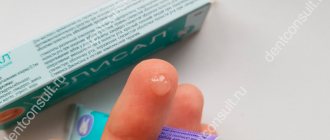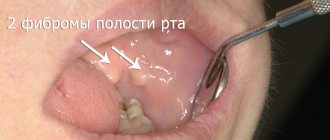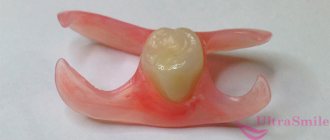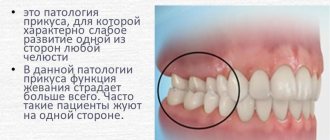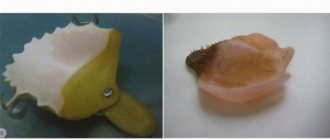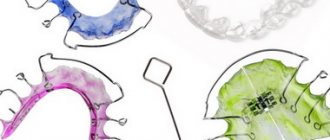The baby has a facial cleft - how to care for him and rehabilitate him after surgery
We continue a series of publications devoted to neurosurgical diseases. The project was prepared jointly with the MBOO for helping children with neurosurgical diseases “He Needs You.” We want these “terrible” diagnoses not to put pressure on parents and not to take away their hope. In our publications, the best specialists and experienced parents will talk about ways to cure and overcome, give recommendations and show that life can go on with any, even such complex, diseases.
In our first publication on facial clefts, we highlighted the types of clefts and talked about the modern surgical approach to their treatment. In the second part, we will talk about the simplest things related to nursing a baby, which present certain difficulties for babies with clefts.
The baby has a cleft. How to feed him
The vast majority of children with cleft lip and palate are born at normal weight. However, due to difficulties associated with feeding, they are unable to gain sufficient weight in the future.
Weight gain and prevention of aspiration and ear infections are the most important aspects of caring for a newborn with a cleft in the first days and weeks of life.
The optimal source of nutrition for a child in the first months of life is breast milk. It is important to try to conserve milk and establish breastfeeding.
“Children with facial clefts get ear infections easily because milk travels through the cleft through the eustachian tubes into the middle ear. Foreign proteins from mixtures irritate these passages. The fact that babies who suckle at the breast get infected ears makes breast milk a medicine for them.” (Chapter “Breastfeeding Special Children in Special Circumstances” from the book Your Baby by William and Martha Sears)
Children born with a cleft often have difficulty breastfeeding because it is impossible to create the negative pressure in the mouth needed to absorb milk.
If the child has preserved the integrity of the alveolar process of the upper jaw and the hard palate, then most likely the baby will be able to latch onto the breast. While breastfeeding, he will use his mouth and facial muscles more actively than when bottle feeding. And the stronger the muscles of the soft palate and lips are, the easier it will be for the surgeon to close the cleft, which means the operation will be more effective. In addition, speech therapists recommend breastfeeding as a therapeutic method that does not require additional effort or expense.
The American Academy of Breastfeeding Medicine, in its protocol on feeding infants with facial clefts, recalls that the antibacterial composition of breast milk promotes post-operative healing and reduces mucosal irritation. Academy experts believe that in the case of a cleft lip, it is relatively easier for children to master breastfeeding than artificial feeding, since breast tissue can close the defect more successfully than an artificial nipple.
The difficulty of feeding babies with clefts lies in the fact that due to the free communication between the oral and nasal cavities, there is a high risk of aspiration (entry of oral contents into the trachea), which can cause respiratory arrest.
To prevent aspiration it is important:
- place the baby in a semi-upright position (the “sitting” position of the baby will prevent milk from leaking through the nose and will not cause choking),
- control air access through the nasal passage,
- after feeding, keep the baby in an upright position (until burping occurs);
- When lying down, turn the baby's head to one side.
If milk enters the respiratory tract, stop feeding and allow the baby to cough and cough for a few seconds while nasal regurgitation occurs.
With through clefts of the upper lip and hard palate, breastfeeding is usually impossible. In this case, to feed the child in the first months, you can use special “bottles for feeding children with clefts”, a syringe, spoons, sippy cups (the famous Haberman sippy cup is now called the “sippy cup for children with special needs”).
You can organize feeding in this way: the child sucks the mother’s finger, which covers the cleft palate, while at the same time expressed milk or formula is squeezed into his mouth from a syringe with a feeding attachment. In this way, the baby will satisfy the need for sucking, will work the muscles of the mouth and will begin to receive fluid at a pace that suits him.
Features of caring for a baby with facial clefts
Carefully clean the nose using damp cotton swabs soaked in oil (sterile olive, sea buckthorn) or herbal infusions (chamomile).
With cleft lips and palate, part of the oral mucosa is in constant contact with air. This leads to the formation of cracks and crusts on the mucous membrane of the upper lip. Toilet your upper lip, especially in the cleft area: carefully remove pre-soaked crusts and treat the surface with sterile oil.
When walking in the cold season, use gauze masks on the area of the wide cleft of the upper lip to warm the incoming air.
Classification of defects
Based on their shape and anatomical features, congenital clefts are divided into several types and subtypes. First of all, they focus on localization:
- clefts that affect only the soft palate;
- clefts affecting both the hard and soft palates;
- clefts of the soft, hard palate and alveolar process;
- clefts of the alveolar process and the anterior part of the hard palate.
Then the degree of expression is assessed.
- Hidden: located within the muscle tissue of the soft palate and the bone tissue of the hard palate, without extending to the mucous membrane.
- Incomplete: the palate is partially cut.
- Full: completely cut through the palate.
They also describe whether the defect appears on one or both sides of the face. As a result, the classification takes the following form:
- clefts of the soft palate can be hidden, incomplete or complete;
- the same varieties in clefts of the soft and hard palate;
- clefts of the soft, hard palate and alveolar process are always complete and can be one- or two-sided;
- clefts of the alveolar process and the anterior part of the hard palate can be complete or incomplete, in both cases - unilateral or bilateral [4].
The operation is over. What's next?
The baby is prescribed treatment aimed at preventing the occurrence of rough postoperative scars of the upper lip. Scars worsen the aesthetics of the face, limit the mobility of the upper lip, which causes impaired articulation and deformation of the dentition. Physical therapy will help prevent such scars.
If the cleft lip is deep and extends into the nasal cavity, then during the postoperative period the child should wear a “nasal liner” (endonasal retainer). This is a device that creates the correct shape of the child’s nostril on the side of the cleft. The retainer is a conical tube formed along the outer edge, in the shape of a healthy nostril. The retainer is made by the orthodontist before surgery.
Children with congenital clefts need regular examinations by an otolaryngologist because they are three to four times more susceptible to ENT diseases due to abnormal communication between the mouth and nasal cavity.
Regular visits to the dentist will ensure timely sanitation of the mouth. This is an important condition for successful rehabilitation.
An important stage in the rehabilitation of a child with a cleft is sessions with a speech therapist.
Olga Legostaeva, speech therapist at the Rehabilitation Center for Speech Development at the Institute of Congenital Diseases of the Maxillofacial Region, Professor Gonchakov, explains exactly what kind of help speech therapists can provide:
“90% of children with facial clefts need speech therapy help. Sometimes such children are diagnosed with “rhinophonia” - the so-called “nasality”, the pronunciation of sounds “in the nose”. Sometimes - “rhinolalia” (voice disturbance, nasalization plus specific pharyngeal pronunciation, some sounds are replaced by exhalation through the nose, speech becomes completely incomprehensible). Sometimes, if a cleft is one of the signs in the structure of a particular syndrome (Pierre Robin syndrome, etc.), delayed speech development is possible. But even in this case, the prognosis can be favorable.
An important point is that working with those children who had facial clefts differs from working with other disorders. Often children come to us whose parents complain: “We have been working with the child for two or three years, no results. - What are you doing? - Speech therapy massage. But in this case it is not necessary to do a massage. If the child is not breathing properly, the massage will be of no use.
The most effective in this case are breathing exercises and exercises for the formation of the velopharyngeal ring.
Breathing exercises are needed to teach your child to breathe using the diaphragm and abdominal muscles. Our children with clefts usually use their collarbones and shoulders to breathe. If you teach a child to use the abdominal muscles, take a deep breath through the nose and exhale strongly through the mouth, and open the mouth correctly, correct breathing will be formed. Then it will be easy to put sounds.
The second set of exercises is necessary in order to develop the muscles of the velopharyngeal ring. Due to physiology, our children cannot close their throats, so when they phonate, the air goes into their nose. But such simple exercises as coughing, yawning, swallowing liquid in small portions, arranged in a certain system, help develop the velopharyngeal ring and create the conditions for good sound. Vocal phonopedia perfectly develops the palate.
This work is not quick, it is long, painstaking work that requires the constant participation of parents. Parents are always present at our classes; they not only write down the lessons in a notebook, but also learn how to correctly present tasks to the child and ensure that he completes them correctly.
You should start classes as early as possible. We don’t have the concept of “started studying too early.” If a child does not speak after surgery at two to two and a half years old, this is a reason to see a speech therapist. If he is three years old and speaks “in his nose,” this is also a reason to see a speech therapist.
In my experience, three-year-olds are much easier to deal with than five-year-olds. Five-year-olds have quite a long speaking experience. And in order to correct their speech defects, they have to be “broken.” Three year olds are more flexible. Therefore, I recommend starting to practice as early as possible. Usually, if we start teaching a child at three years old, by the age of five or six he no longer has problems with pronunciation. At an early age, many speech problems can be corrected.
It is only important to understand that the rehabilitation of children with facial clefts must be comprehensive. A facial cleft is not only an anatomical defect, it is a defect that impairs breathing, hearing, and speech. Therefore, when working with such children, a speech therapist alone is not enough. In our center, for example, there is a team that includes a speech therapist, a phonologist and a psychologist.”
A phonopedist is a speech pathologist who restores physiologically correct sound production.
Natalya Borisovna Silkina is a phonopedist; for three years she worked at the Rehabilitation Center for Speech Development at the Institute of Congenital Diseases of the Maxillofacial Region, Professor Gonchakov.
“90% of children with facial clefts hear worse than ordinary children,” says Natalya Borisovna. — Their hearing loss occurs due to the fact that they do not hear all frequencies. This defect can be eliminated with the help of exercises to develop phonemic hearing (starting from two years), and with the help of vocals.
It is best if the mother sings with the baby. Always. At trainings, we teach mothers to sing continuously, almost around the clock. Only in this case do the kids begin to sing on their own. The fact is that such children are not able to perceive those songs that sound from electronic media. The speed is too high. For them it is background, noise.
Moreover, it is better to talk to them slowly and loudly, pronouncing the words clearly: they will not hear enough. Therefore, when I practice with them in the center, I pronounce everything and sing it five times slower.
Older children can be taken to a vocal studio. Vocal exercises stretch tissues and relax the apparatus. The palate is the same muscle, only its sensitivity is reduced due to the suture. Vocal exercises allow you to gently work this muscle. But ideally, vocals should be studied with a phonopedist who knows the features of rhinolalia and rhinophony.”
How to prepare for the procedure
To perform veloplasty for congenital defects, the patient undergoes clinical and laboratory tests to determine the general health of the body (general blood tests, urine tests, biochemistry, blood clotting, HIV tests, determination of the Rh factor and blood group, immunological blood tests). Impressions and X-rays of the jaw, endoscopy, echography, etc. are made. Before the operation, the child must undergo a consultation with a pediatrician, maxillofacial surgeon, otolaryngologist, orthodontist, speech therapist, anesthesiologist, dental therapist and psychologist.
Preparation for plastic surgery of the soft palate for people suffering from snoring involves conducting general tests and accurately confirming the relationship between night breathing problems and changes in the palate.

